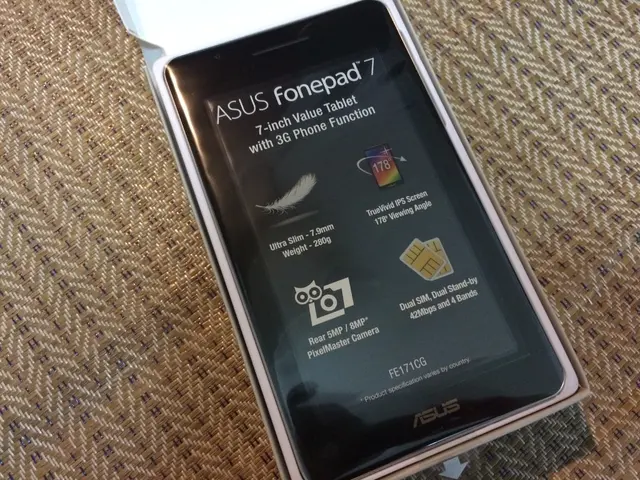Modern Smartphones Continue to Employ Technological Remnants from WWII
World War II played a pivotal role in shaping the technology that powers our modern smartphones. The conflict spurred breakthroughs in wireless communication, radio technology, and data compression, which laid the foundation for the mobile devices we use today.
The ENIAC (Electronic Numerical Integrator and Computer), completed in 1945, was the first big digital computer. Weighing a massive 30 tons and occupying an entire room, it could perform thousands of calculations per second – a feat that was impressive for its time. The ENIAC demonstrated the potential of electronic machines, paving the way for the miniaturized processors found in today's smartphones.
One of the most significant advancements during World War II was the development of two-way radios. The Motorola SCR-300, the first backpack FM radio, introduced during the war, offered better sound and range than any previous device. This pioneering portable, two-way radio communication technology is fundamental to mobile telephony.
The military's use of mobile communication networks during and after World War II contributed to early mobile cellular technologies. The concept of cellular networks was first proposed in 1947 by Douglas H. Ring and W. Rae Young. Post-war, engineers at Bell Labs began thinking about creating a system where everyone could have a phone in their car, leading to the development of cellular networks.
The war effort also sparked innovations in radar technology. The British improved radar technology with the invention of the cavity magnetron, which used microwave signals for sharper, longer-range detection. Radar technology, similar to GPS, sends out a signal and uses timing to figure out location. During World War II, radar allowed Allied forces to detect enemy planes and ships using radio waves.
The work of codebreakers during World War II, such as Alan Turing, laid the groundwork for how computers "think" and how we protect digital information. Every time your phone sends an encrypted message, locks your data, or secures your online payments, it's using math that traces back to WWII codebreakers.
In addition, innovations in data compression and signal transmission techniques linked to early videophone research before and after World War II contributed to the foundation for transmitting visual data – an essential feature for smartphones today.
Modern smartphones, equipped with cameras and GPS, now enable real-time data sharing in conflicts, a profound evolution rooted in the wartime communication breakthroughs of the 20th century.
The invention of the transistor in 1947 by Bell Labs made it possible to shrink computers from room-sized monsters to pocket-sized powerhouses. Transistors led to the development of microchips and processors, which are the tiny, brain-like parts inside your phone that let it run apps, take photos, and stream TikToks all at once.
Moreover, the ENIAC laid the groundwork for the Von Neumann architecture, which is still the basis for computing in modern smartphones. Modern smartphones use tiny versions of these inertial navigation tools, called MEMS sensors, for features like auto-rotating screens, counting steps, and mobile gaming.
In essence, World War II drove innovations in portable, reliable, and efficient wireless communication devices and related technologies (such as radio, radar, and signal compression), which directly seeded the development of mobile telephony and ultimately the multifunctional modern smartphone.
The ENIAC, completed in 1945, marked the beginning of the miniaturized processors found in today's smartphones, demonstrating the potential of electronic machines.
The pioneering portable, two-way radio communication technology during World War II, such as the Motorola SCR-300, plays a fundamental role in mobile telephony, a key feature in modern smartphones.




